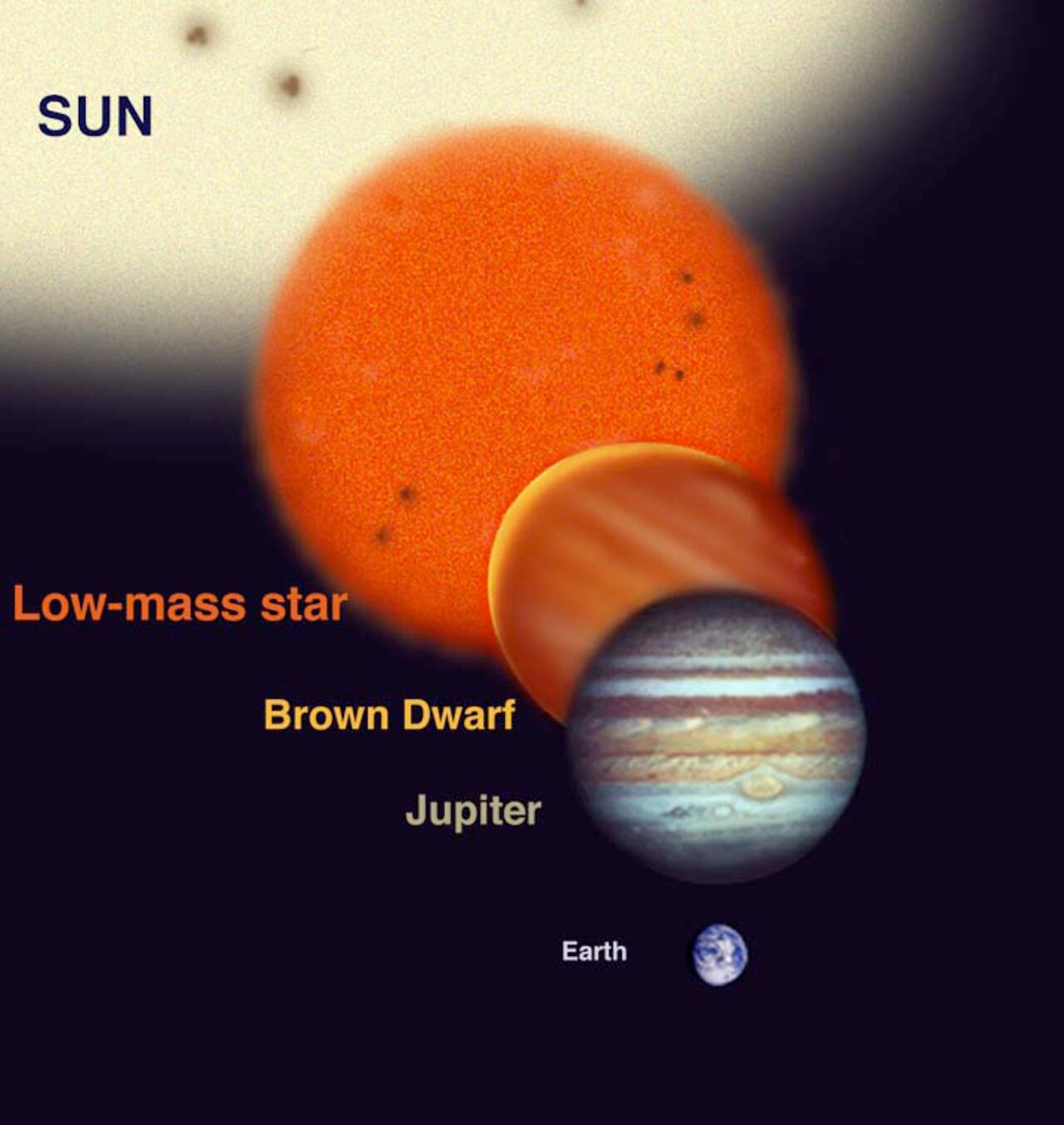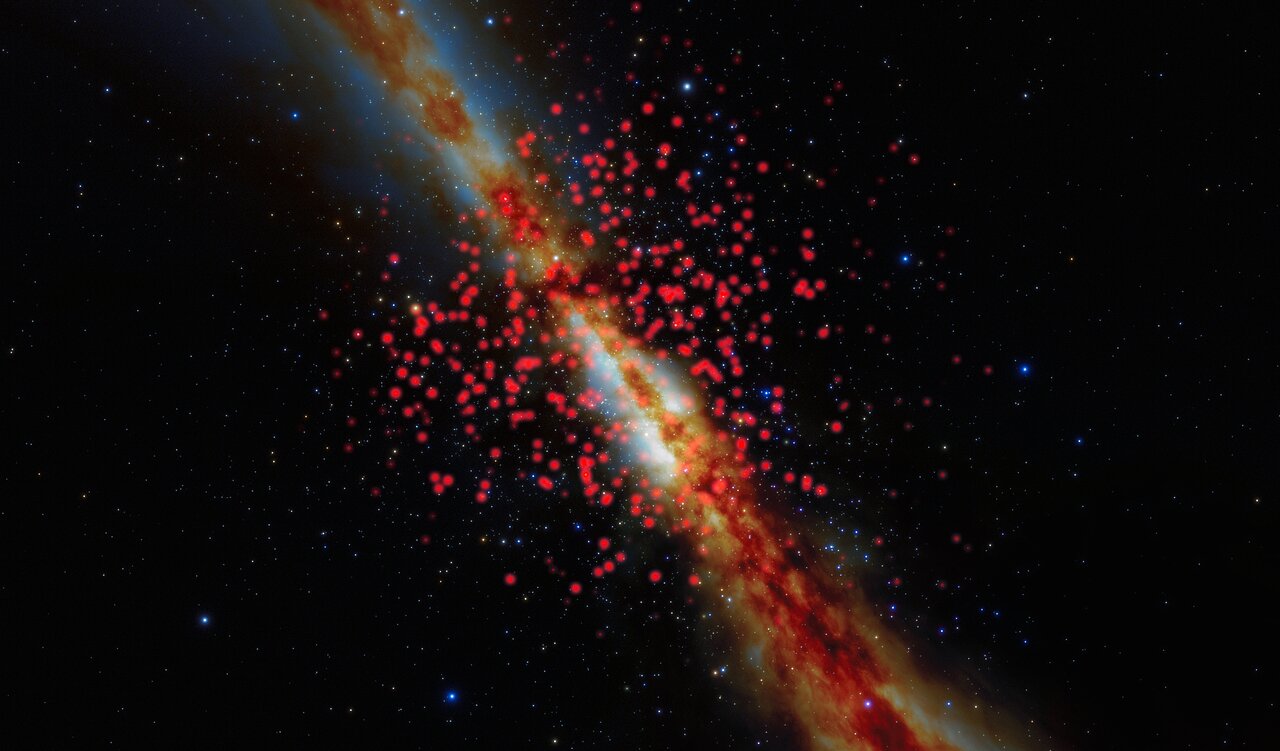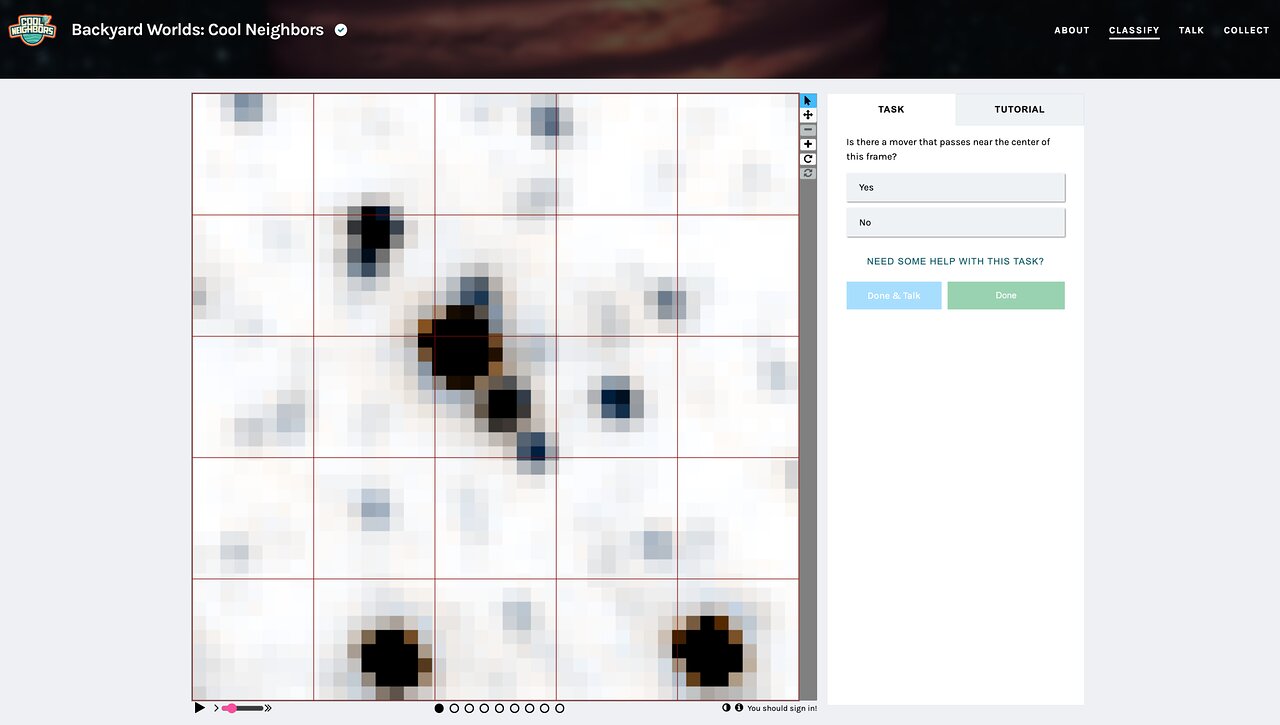
Newly Launched Backyard Worlds: Cool Neighbors Project Assembles Team of Citizen Scientists to Hunt for Brown Dwarfs in Our Cosmic Backyard
Citizen science and machine learning join forces to search for brown dwarfs in the Sun's local cosmic neighborhood
20 July 2023
Did you know that you can participate in cutting-edge scientific research and discovery right from your own laptop or cellphone? Through citizen-science projects, professional astronomers are partnering with the public and harnessing the power of many minds to identify as yet undiscovered celestial bodies and cosmic phenomena. From exoplanets and asteroids to solar flares and supernovae, dedicated citizen-scientist volunteers are helping to uncover new astronomical objects and events to be studied and are contributing to our ever-evolving understanding of the Universe.
Citizen-scientist Frank Kiwy was named lead author on a research paper published in The Astronomical Journal after he scoured NSF's NOIRLab’s catalog of 4 billion celestial objects and discovered 34 ultracool dwarf binary systems.
With the 27 June launch of NSF’s NOIRLab’s Backyard Worlds: Cool Neighbors — a citizen-science project that combines machine-learning tools with people-powered research — there’s a fresh call-to-action for the science-sleuthing community to scour the sky in search of close neighbors of the Sun, known as brown dwarfs.
Sometimes referred to as ‘failed stars’, brown dwarfs are cool, isolated objects with masses in between those of the smallest red dwarf stars and those of giant planets like Jupiter, meaning they share properties with both. Because brown dwarfs have too little mass to sustain hydrogen fusion, they don’t shine like their main-sequence stellar relatives. Instead, they glow very faintly, emanating just the heat left over from their formation. However, most of the light that they emit is not visible like that of stars such as our Sun: rather they shine, albeit dimly, in the infrared and can therefore be detected with infrared telescopes.
By identifying and studying these objects, astronomers can learn about the star formation process and what chemical compounds are prevalent throughout the Milky Way, explains NOIRLab undergraduate research intern and Cool Neighbors team member Grady Robbins. “Brown dwarfs are also crucial for learning about the atmospheres of exoplanets,” he said, “and therefore important in the search for signatures of extraterrestrial life.” The benefit of studying brown dwarf atmospheres is that they can be observed in detail without the glare of a much brighter host star interfering.
“It's possible that there could be an as yet overlooked brown dwarf right in our cosmic backyard.”
Owing to their subdued glow and absence of a nearby star to illuminate them, brown dwarfs are particularly difficult to find, even with today’s selection of world-class observatories. This means it's possible that there could be an as yet overlooked brown dwarf right in our cosmic backyard, possibly closer to us than Proxima Centauri, the nearest known star to our Sun. This would be a historic discovery, but astronomers need as many eyes on archival telescope images as possible to find such an elusive, cool neighbor.
Cool Neighbors is launching on the heels of the ongoing citizen-science project Backyard Worlds: Planet 9, co-founded by NOIRLab astronomer Aaron Meisner and hosted by Zooniverse. Using archival data from the Nicholas U. Mayall 4-meter Telescope at Kitt Peak National Observatory and the Víctor M. Blanco 4-meter Telescope at Cerro Tololo Inter-American Observatory, made available through the Community Science and Data Center, all of them Programs of NSF’s NOIRLab, the Planet 9 project was designed to search for a hypothesized planet (referred to as Planet 9) in the outer reaches of our Solar System. And while the project has been tremendously helpful in identifying brown dwarfs, uncovering roughly 100 new cool worlds near the Sun, its visual inspection workflow is not optimized for brown dwarf discovery.
On the other hand, Backyard Worlds: Cool Neighbors is designed solely for the mission of hunting down brown dwarfs, with a focus on Y dwarfs — the coldest known class of brown dwarfs — and will draw on the capabilities of machine learning and the unmatched power of human-eye analysis.
“Y-dwarfs, like giant exoplanets, seem to be diverse, so we need to find more of them.” says Robbins. “One of the best, and simplest, ways we can do that is by having more individuals participating.”
“The most efficient way to vet potential brown dwarf candidates is with the power of citizen science to analyze huge amounts of data in a short amount of time.”
Cool Neighbors uses infrared images taken by NASA’s Wide-field Infrared Survey Explorer (WISE) telescope. Launched in 2009, WISE has been repeatedly mapping the entire sky in infrared light and has compiled a catalog of two billion stars and galaxies. This treasure trove of data has been sifted into hundreds of thousands of flipbooks, or movies of small patches of sky that flip through multiple exposures to capture moving objects. Since motion is a telltale indicator that a celestial object is nearby rather than far away, this is, historically, how nearby stars and outer Solar System planets have been discovered by astronomers.
Each flipbook is centered on a brown dwarf candidate that was pre-selected via machine learning. These algorithms have limitations, though, so the most efficient way to vet potential brown dwarf candidates is to leverage citizen science to inspect huge amounts of data in a short amount of time.
“It would be impractical to search through tens of thousands of candidates without some form of large-scale people-powered research.” says NOIRLab undergraduate research intern and Cool Neighbors team member Austin Humphreys. “This is why we use machine learning to select candidates and then we let our wonderful citizen scientists search through them to find the best new discoveries.”
Volunteers need to simply view the flipbook, look carefully for pixels that appear to be moving in a straight line across the frame, and then decipher whether it’s a potential brown dwarf or what’s called an ‘artifact’. Artifacts can be anything from detector noise and defects to diffraction spikes caused by the WISE telescope’s optics. If the moving pixels are a convincing cool neighbor, volunteers can then submit their discovery with the click of a button.
To discover a new brown dwarf, volunteers likely will each need to look through roughly 100–500 flipbooks. Though this may seem like a time-intensive task, it can be accomplished at any desired pace and from any location. And the Cool Neighbors platform comes equipped with all of the resources a brown dwarf hunter could need, such as a Field Guide, an extensive FAQ page, and even a Talk page where users can ask questions directly to the team as well as discuss their finds with other hunters.
“Since launch day, we’ve seen tremendous support from citizen scientists, old and new.”
There are approximately 3000 confirmed brown dwarfs to date, and the Backyard Worlds: Cool Neighbors project team expects to find somewhere between several hundred and 1000 new brown dwarfs with the help of their citizen-scientist partners. “Since launch day, we’ve seen tremendous support from citizen scientists, old and new,” says Humphreys. “We had thousands of classifications performed within the first few hours of launch, so I am greatly excited by the prospects of finding new brown dwarfs within the almost thirty thousand candidates we have to share.”
Will you discover the next cool neighbor in our cosmic backyard? Head over to the Backyard Worlds: Cool Neighbors website and give it a go. Happy hunting!
Links




